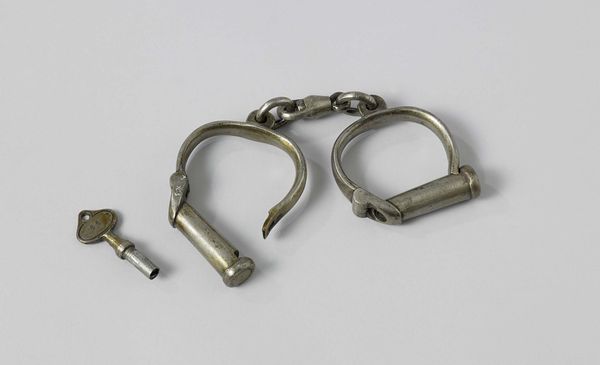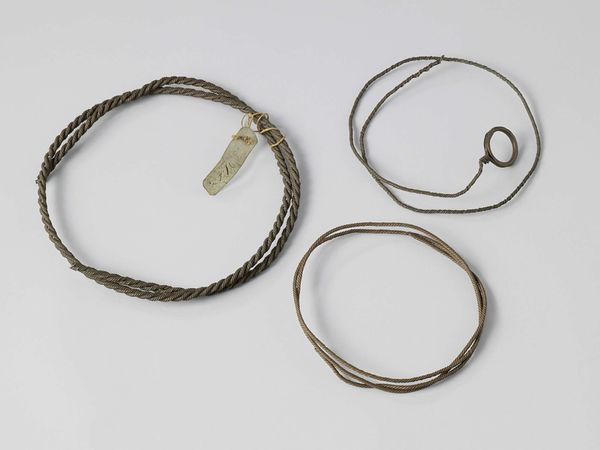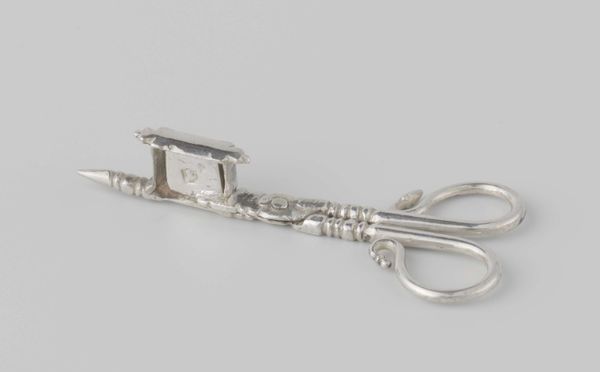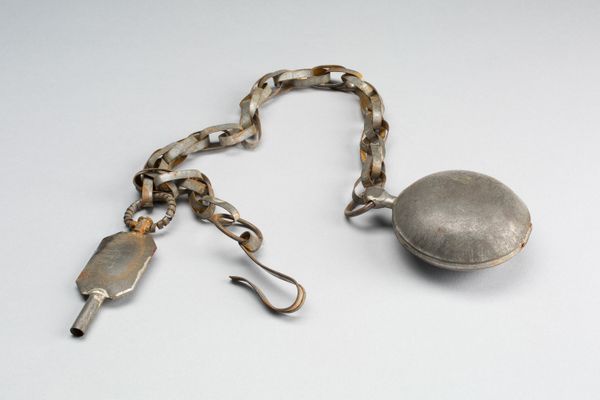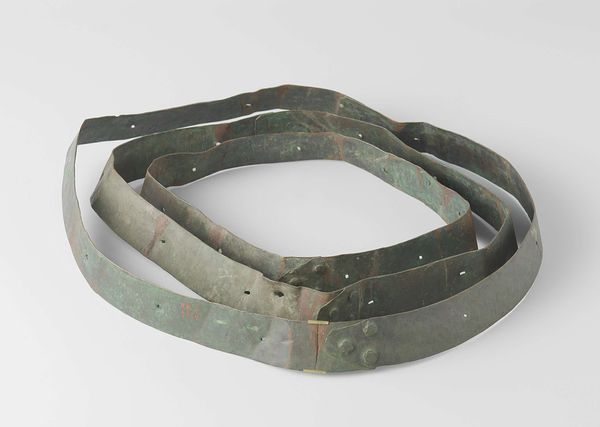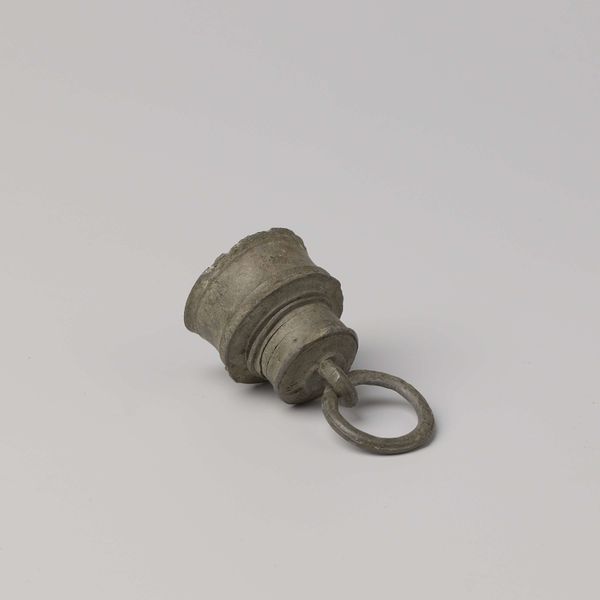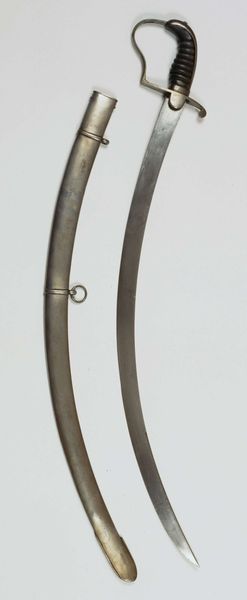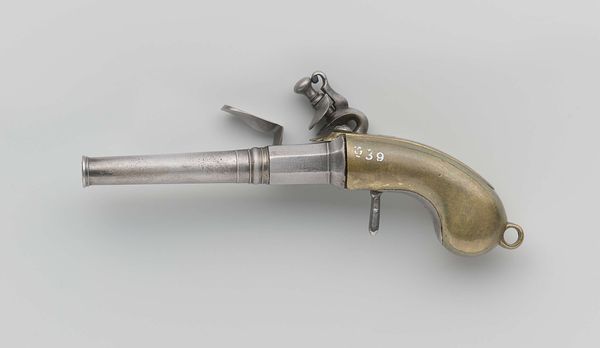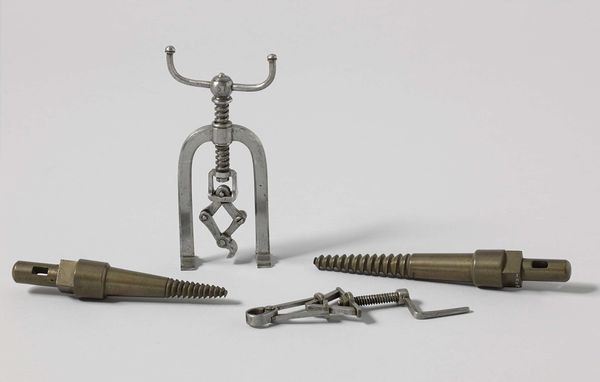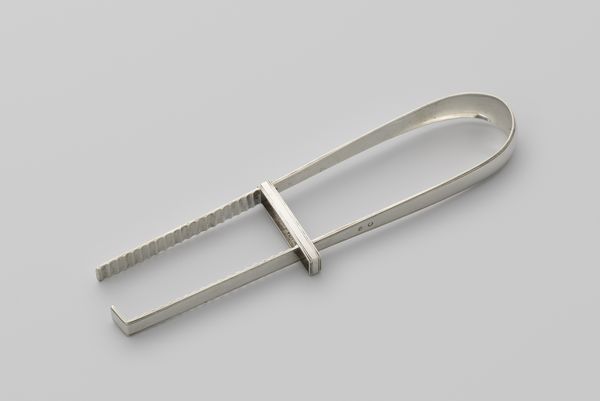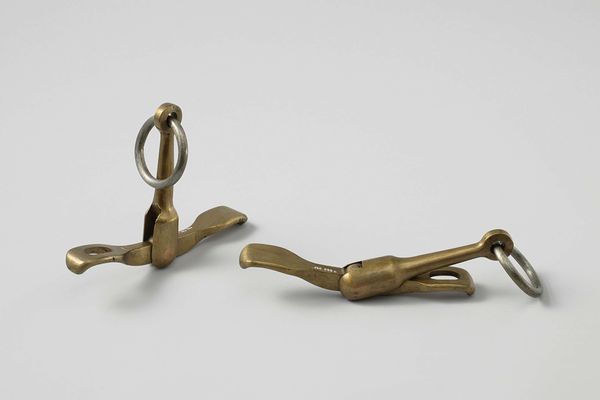
metal, found-object, sculpture
#
metal
#
found-object
#
figuration
#
sculpture
#
history-painting
Dimensions: length 67 cm, width 10 cm
Copyright: Rijks Museum: Open Domain
Curator: These are a pair of legcuffs, dating from around 1860 to 1866. Editor: Chilling. I am struck by how brutally functional the piece appears, cold steel reduced to its starkest form. It is such an evocative and unsettling sculpture. Curator: Precisely. The artist, Frogatt, created these legcuffs from metal and found objects, reflecting the utilitarian nature inherent in its purpose. What do you make of the formal elements at play here? The cold tone? The chain, that restricts? Editor: The material itself is telling, its heavy solidity evokes weight and immobility. The form certainly follows function. I'm curious to understand how such artifacts relate to historical penal systems. What would be the institutional impact? Curator: The composition is incredibly straightforward – two circular restraints linked by a short chain. And, if we delve into semiotics, we can analyze the circular form representing enclosure and lack of freedom. The small key adds to this. How does the artist, intentionally or unintentionally, speak through visual representation? Editor: True, and as historical objects, items like these highlight broader systems of power. How might this function within carceral and justice infrastructures during the mid-19th century, both in Britain and abroad in territories in the then Empire? Whose liberty did this violate, and why? And what does displaying these objects communicate about this? Curator: This interpretation also offers valuable insights into the aesthetics of control, revealing a complex interplay between societal structures and the experience of captivity through art history, both individually and institutionally. What are your final thoughts? Editor: I am left considering what displaying such objects from fraught and unequal pasts signals about a society's accountability toward acknowledging past wrongs, as we continue in their afterlives. Curator: Indeed. The artwork functions not just as a study in material composition, but in symbolic weight. A truly compelling work, I think, as well as sobering in effect.
Comments
No comments
Be the first to comment and join the conversation on the ultimate creative platform.
